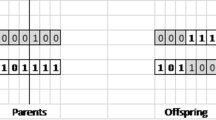Abstract
With the onset of ICT and big data capabilities, the physical asset and data computation is integrated in manufacturing through Cyber Physical Systems (CPS). This strategy also denoted as Industry 4.0 will improve any kind of monitoring for maintenance and production planning purposes. So-called bigdata approaches try to use the extensive amounts of diffuse and distributed data in production systems for monitoring based on artificial neural networks (ANN). These machine learning approaches are robust and accurate if the data base for a given process is sufficient and the scope of the target functions is curtailed. However, a considerable proportion of high-performance manufacturing is characterized by permanently changing process, workpiece and machine configuration conditions, e.g. machining of large workpieces is often performed in batch sizes of one or of a few parts. Therefore, it is not possible to implement a robust condition monitoring based on ANN without structured data-analyses considering different machine states – e.g. a certain machining operation for a certain machine configuration. Fuzzy-clustering of machine states over time creates a stable pool representing different typical machine configuration clusters. The time-depending adjustment and automatized creation of clusters enables monitoring and interpretation of machine tool characteristics independently of single machine states and pre-defined processes.
Chapter PDF
Similar content being viewed by others
References
Lee, J.; Bagheri, B.; Kao, H.-A.: “A Cyber-Physical Systems architecture for Industry 4.0- based manufacturing systems”, Manufacturing Letters. 18–23 2015.
Lu, Y.: Industry 4.0: a survey on technologies, applications and open research issues. Journal of Industrial Information Integration 6, 1-10 (2017).
Gausemeier, J.; Klocke, F.: Industrie 4.0 – International Benchmark, Options for the Future and Recommendations for Manufacturing Research, Paderborn 2016.
J. T. Farinha, I. Fonseca, R. Oliveira und H. Raposo, „CMMS – An integrated view from maintenance management to on-line condition monitoring,“ in Proceedings of Maintenance Performance Measurement and Management (MPMM) Conference, Coimbra, Portugal, 2014.
R. Teti, K. Jemielniak, G. O’Donnell and D. Dornfeld, „Advanced monitoring of machining operations,“ CIRP Annals - Manufacturing Technology, Nr. 59, pp. 717-739, 2010.
W. Derigent, E. Thomas, E. Levrat and B. Iung, „Opportunistic maintenance based on fuzzy modelling of component Proximity,“ CIRP Annals - Manufacturing Technology, Bd. 58, pp. 29-32, 2009.
M. Putz, U. Frieß, M. Wabner, A. Friedrich, A. Zander and H. Schlegel, „State-based and self-adapting Algorithm for Condition Monitoring,“ in 10th CIRP Conference on Intelligent Computation in Manufacturing Engineering - CIRP ICME ‘16, Ischia, Naples, Italy, 20 - 22 July 2016.
U. Frieß, M. Kolouch, M. Putz, A. Friedrich and A. Zander: “Fuzzy-clustering of machine states for condition monitoring”, CIRP Journal of Manufacturing Science and Technology, Vol. XX, xxx-xxx, 2018.
R. Kruse, C. Borgelt, C. Braune, F. Klawonn, C. Moewes und M. Steinbrecher, Computational Intelligence - Eine methodische Einführung in Künstliche Neuronale Netze, Evolutionäre Algorithmen, Fuzzy-Systeme und Bayes-Netze, Wiesbaden: Springer Vieweg, 2. Auflage 2015.
Author information
Authors and Affiliations
Corresponding author
Editor information
Editors and Affiliations
Rights and permissions
Open Access This chapter is licensed under the terms of the Creative Commons Attribution 4.0 International License (http://creativecommons.org/licenses/by/4.0/), which permits use, sharing, adaptation, distribution and reproduction in any medium or format, as long as you give appropriate credit to the original author(s) and the source, provide a link to the Creative Commons licence and indicate if changes were made.
The images or other third party material in this chapter are included in the chapter's Creative Commons licence, unless indicated otherwise in a credit line to the material. If material is not included in the chapter's Creative Commons licence and your intended use is not permitted by statutory regulation or exceeds the permitted use, you will need to obtain permission directly from the copyright holder.
Copyright information
© 2019 The Author(s)
About this paper
Cite this paper
Frieß, U., Kolouch, M., Putz, M. (2019). Deduction of time-dependent machine tool characteristics by fuzzy-clustering. In: Beyerer, J., Kühnert, C., Niggemann, O. (eds) Machine Learning for Cyber Physical Systems. Technologien für die intelligente Automation, vol 9. Springer Vieweg, Berlin, Heidelberg. https://doi.org/10.1007/978-3-662-58485-9_2
Download citation
DOI: https://doi.org/10.1007/978-3-662-58485-9_2
Published:
Publisher Name: Springer Vieweg, Berlin, Heidelberg
Print ISBN: 978-3-662-58484-2
Online ISBN: 978-3-662-58485-9
eBook Packages: Intelligent Technologies and RoboticsIntelligent Technologies and Robotics (R0)




